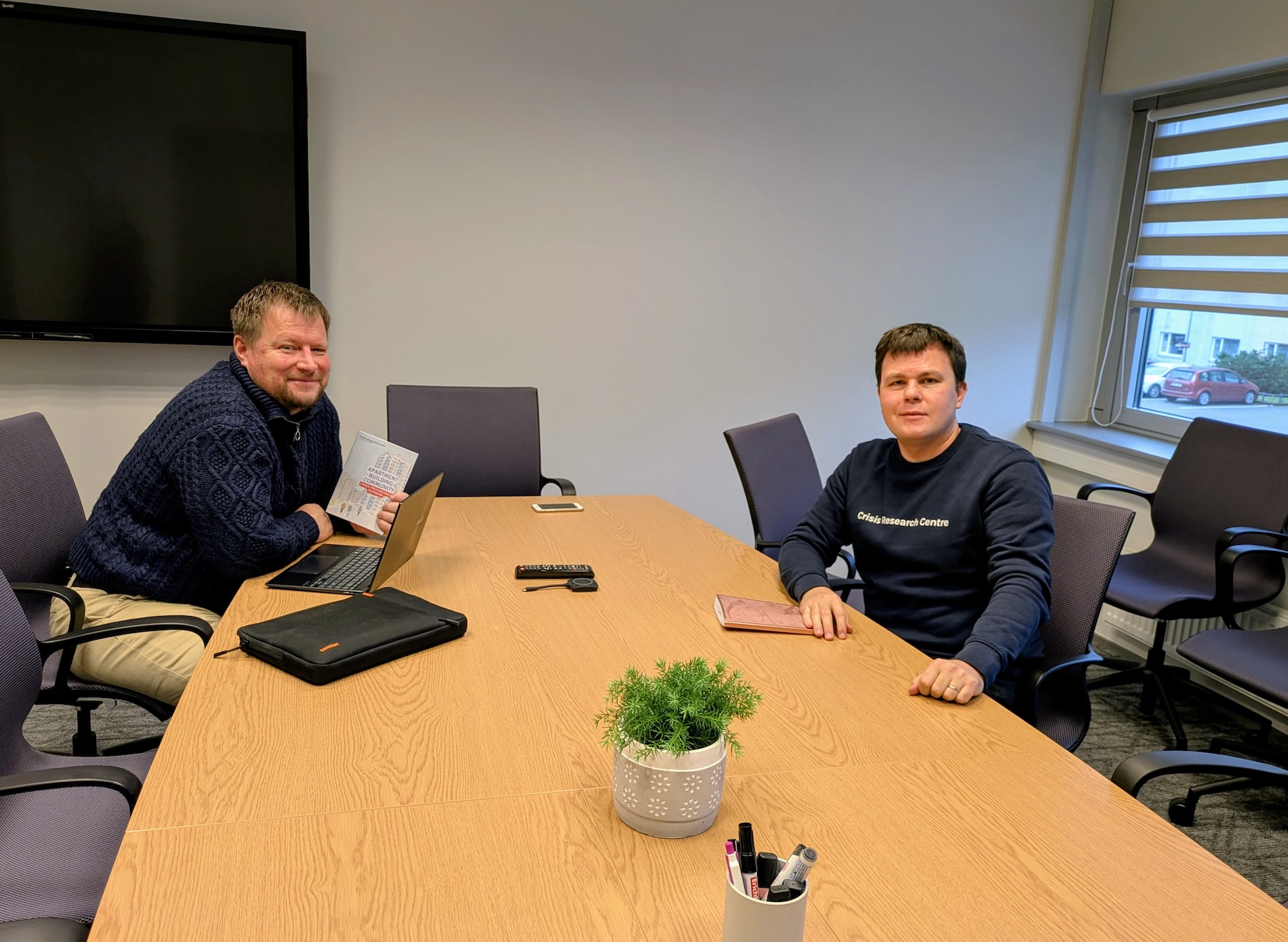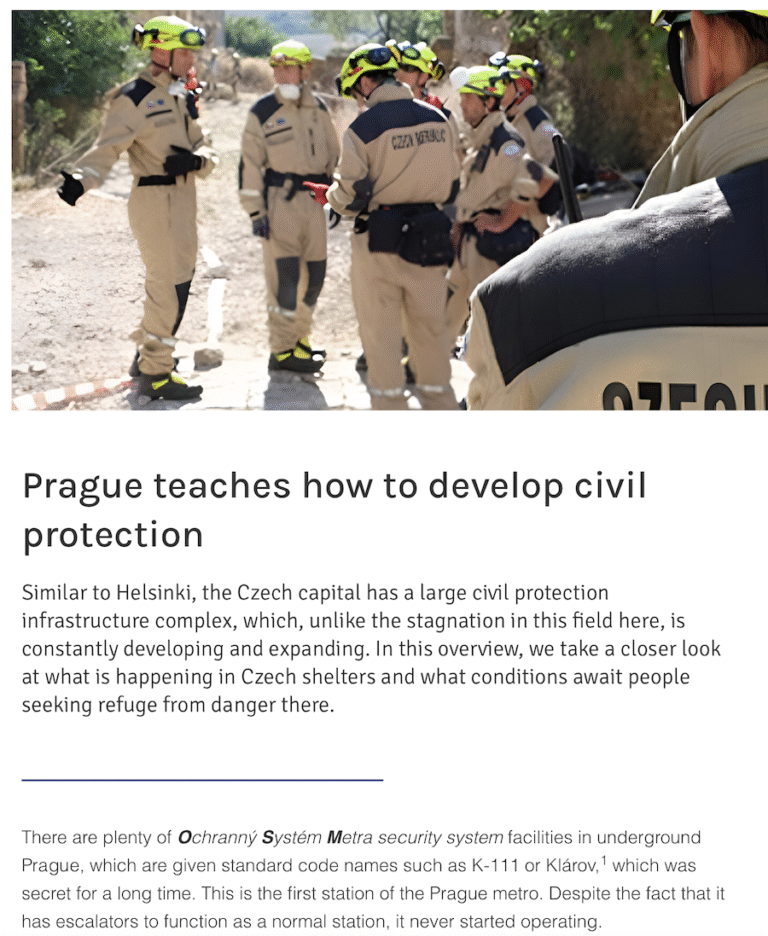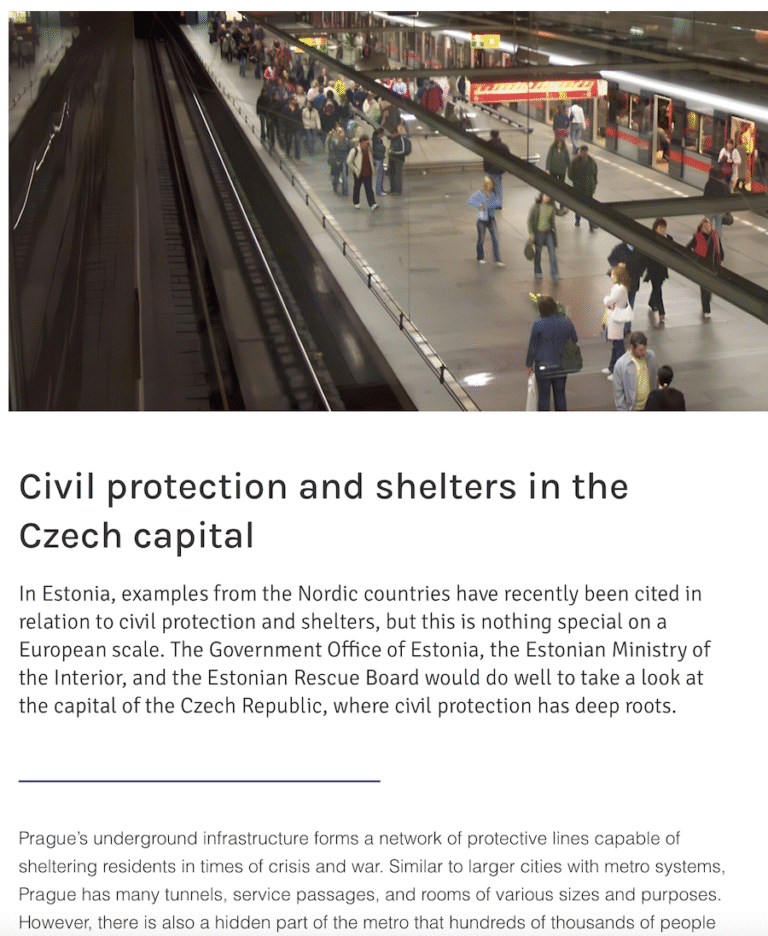
Meeting with the Czech Ministry of the Interior: the role of community civil protection and resilience hubs
On 27 October, we met with Jaroslav Valuch, a representative of the Czech Ministry of the Interior, to discuss strengthening community civil protection and the role of resilience hubs in enhancing local communities’ capacity to cope with crises. The discussion focused on how to improve citizens’ preparedness for various emergencies and what practical community-level solutions can be applied to achieve this
At the meeting, we presented our previous international and Estonian projects (in Tallinn and Kohtla-Järve, supported by the Civil Society Endowment Fund) as well as the Community Civil Protection Handbook for Apartment Buildings, published earlier this year. We also handed over its English version to our Czech colleague. The handbook aims to support apartment building communities with practical guidelines and tools to help them better prepare for crises and strengthen neighbourhood cohesion and continuity.
The meeting builds on our earlier work within the PIMA project (funded by the Swedish Institute), where we explored the concept of resilience hubs in Estonia, Ukraine, and Sweden, and their potential role within civil protection systems. These hubs serve as local support points that can provide information, supplies, and coordination during crises — and, in peacetime, foster cooperation and awareness among communities.
“Strengthening civil protection begins with communities themselves. When residents know how to act, how to support one another, and where to turn in times of crisis, the entire system becomes more resilient. At the meeting with the Czech Ministry of the Interior, it was mutually emphasized that many of these challenges — from floods to hybrid threats — require not only infrastructure, but also trust and local engagement for an effective response,” noted Hannes Nagel, CEO of the Crisis Research Centre.
Like Estonia, the Czech Republic is moving toward a more comprehensive approach to crisis preparedness. The main concerns highlighted by representatives of the Ministry were large-scale floods and major power outages, along with the growing risks associated with hybrid attacks. During the discussion, it was noted that stronger cooperation at the community level and increasing public awareness are key to building resilience.


We have previously provided comprehensive overviews of Prague’s civil protection facilities, which can be read here and here. These provide a good overview of the country’s crisis preparedness infrastructure and approaches, against which our recent discussion is even more relevant.
Photo: meeting on October 27 (Kriisiuuringute Keskus, 2025).
Jaga postitust:
